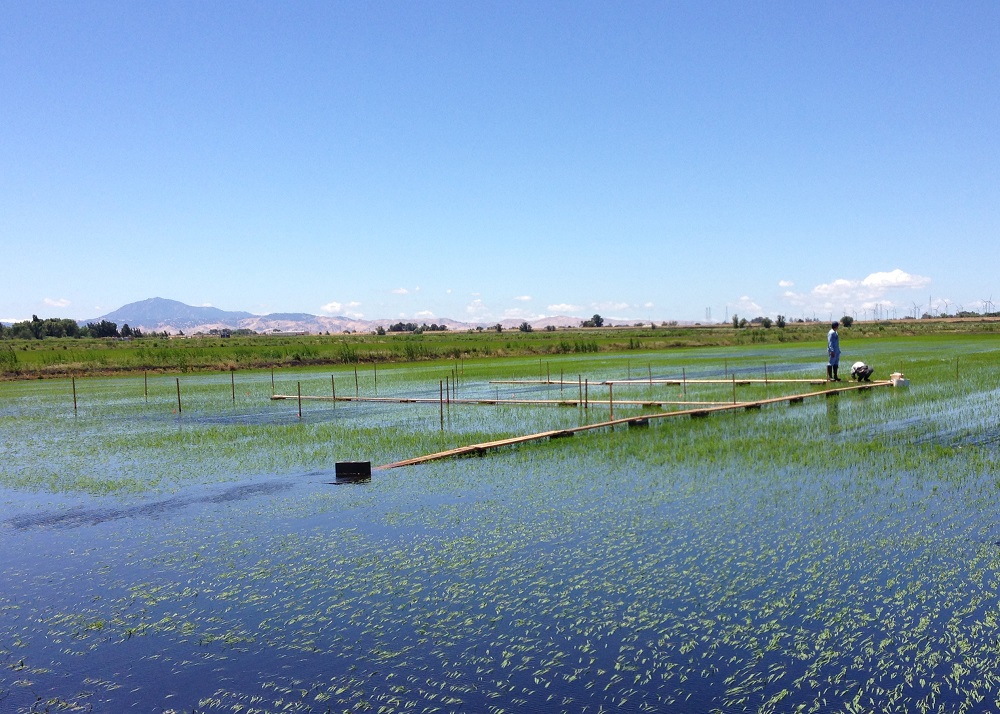02/10/2016
Data Synthesis in the Community Land Model for Ecosystem Simulation
An approach for extracting fundamental variables from simulated or observed ecosystem data and synthesizing other variables using the fundamental variables.

Study co-author Rhonzhong Ye and graduate student Jennifer Morris collecting greenhouse gas fluxes from the rice fields studied on Twitchell Island, CA.
Image courtesy DOE Joint Genome Institute
The Science
Sampling theories, data-mining technologies, and virtual-sensor concepts were used to analyze the correlation between model parameters and bridge gaps between observation data streams and modeling data streams.
The Impact
It is an effort to use sampling theory, data-mining technologies, and virtual-sensor concepts to analyze the correlation between model parameters [e.g., over 60 parameters for the canopy flux module (temperature, air, ground, vegetation, carbon dioxide concentration, photosynthesis, leaf area index, and vcmax)] and to bridge the gaps between observation data streams and modeling data streams. This study is a key step forward in synthesizing model-required data streams from observation or measurable datasets, so that computational experiments can be constructed for direct model-data comparison.
Summary
This paper presents a data synthesis model to generate ecosystem data in climate simulations. This model is capable of (1) extracting key features of different physical properties in time and frequency domain, and (2) discovering and synthesizing the physical relationships between ecosystem variables in different feature spaces.
Principal Investigator(s)
Dali Wang
Oak Ridge National Laboratory
[email protected]
Funding
The work was supported in part by NSFC grant 61305114, as well as the Terrestrial Ecosystem Science program and Accelerated Climate Modeling for Energy project funded by the U.S. Department of Energy, Office of Science, Office of Biological and Environmental Research. This work also used computing resources at Oak Ridge National Laboratory.
References
He, H., et al. “Data synthesis in the Community Land Model for ecosystem simulation.” J. Comput. Sci. 13, 83–95 (2016). DOI:10.1016/j.jocs.2016.01.005.
